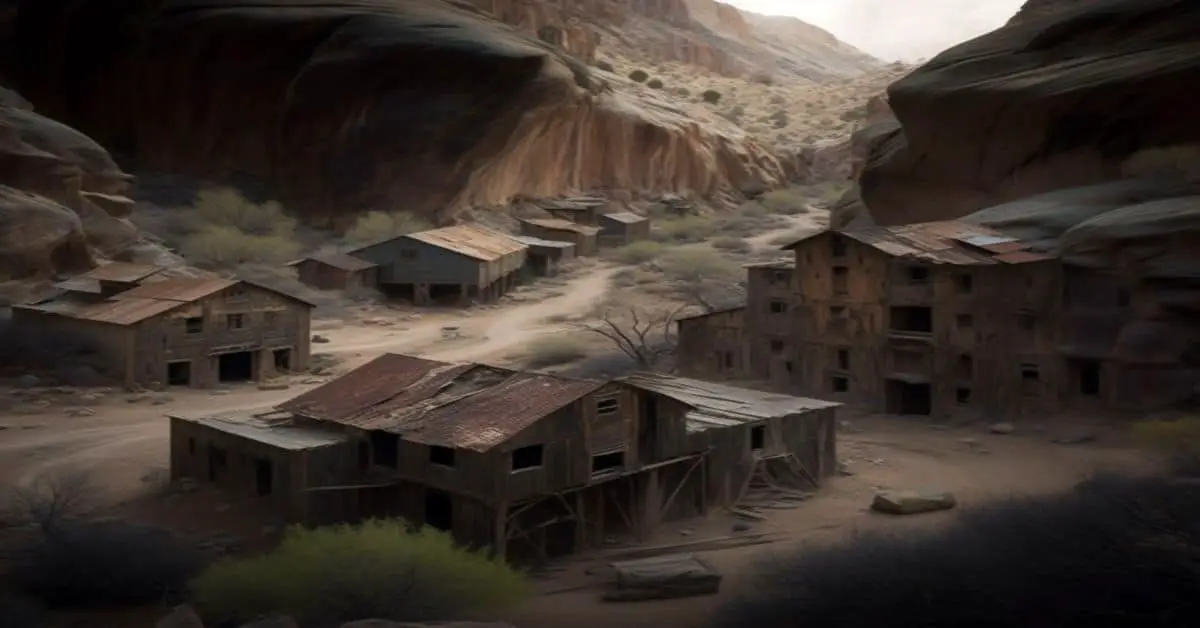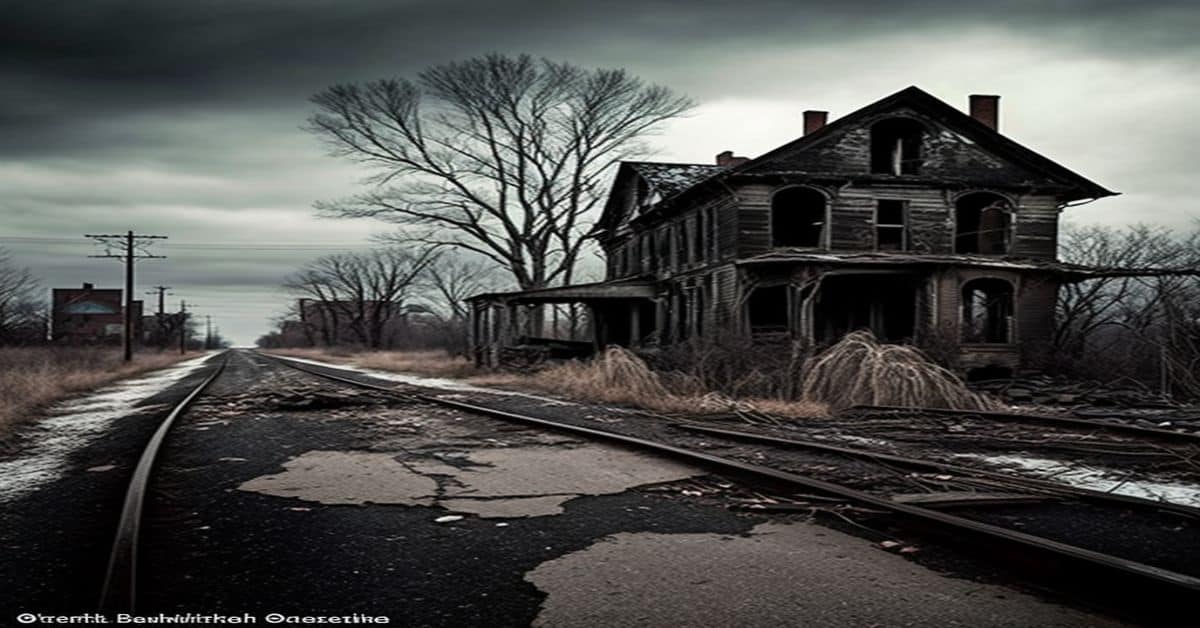The Ghost Town of Indianola, also known as Karlshaven, was once a bustling port city in Texas that played a significant role in the state’s history. Founded in 1844 by German immigrants, the city quickly grew in population and became the second-largest port in Texas, after Galveston.
Despite its thriving economy and the pioneering spirit of its settlers, the town faced several challenges that led to its decline, including devastating hurricanes and the construction of railroads.
Today, Indianola is a ghost town, with only a few remnants of its past glory. However, the town’s tragic history and the perseverance of its people still make it a fascinating destination for those interested in Texas history and the pioneering spirit of the settlers who called it home.
This article will explore the history and founding of Indianola, its importance and decline, and the impact of hurricanes on its legacy. By delving into the rich history of this once-thriving port city, we can better understand the challenges early settlers face in Texas and appreciate their tenacity in the face of adversity.
Key Takeaways
- Indianola was founded in 1844 by German immigrants and became the second-largest port in Texas after Galveston.
- The town was devastated by hurricanes in 1875 and 1886, virtually destroying the once-thriving port and caused a decline in population and local economy.
- The oyster industry declined due to overfishing and pollution, and railroads led to a shift in trade away from Indianola.
- Today, Indianola, now known as Karlshaven, only has a few remnants of its past glory remaining, but its tragic history and perseverance of its people make it a fascinating destination for those interested in Texas history and the pioneering spirit of its settlers.
History and Founding
Indianola or Karlshaven, a Texas Ghost Town, was founded in 1844 by German immigrants who were attracted by the mild climate and fertile land. The early settlers established the town as a center for trade and commerce.
With the railroad’s arrival in the 1870s, Indianola became a major hub for the export of cattle, hogs, lumber, and seafood. The town’s strategic location on the Gulf of Mexico made it a gateway to foreign markets, and the Morgen line from New York, New Orleans, Pensacola, and Cuba, helped to bring in goods from around the world.
The early settlers of Indianola were hard-working and industrious, and they built a thriving community that boasted a Masonic Lodge, Court House, and Jail. The town grew rapidly, and by 1860, it had a population of over 1000. By 1870, the population had increased to over 2000, making Indianola the second most important port city in Texas, after Galveston.
However, the town’s prosperity was short-lived, as it was devastated by two major hurricanes that struck in 1875 and 1886, causing widespread damage and loss of life. Indianola never fully recovered from the disasters despite rebuilding efforts and eventually became a ghost town.
Importance and Decline
The settlement of Indianola, also known as Karlshaven, was once considered a significant hub for trade and transportation in the region. The town’s location on the Matagorda Bay made it an ideal spot for exporting goods such as cattle, hogs, lumber, fish, and oysters. The town’s infrastructure boasted a Masonic Lodge, Court House, and Jail, and it was connected to other cities by oxen wagons and the Morgen line from New York, New Orleans, Pensacola, Cuba, and other foreign countries.
However, the town’s population declined drastically by 1880 due to various factors, including natural disasters, economic decline, and shifting transportation methods. The decline of Indianola began with the first hurricane that struck on September 16, 1875, which destroyed much of the town’s infrastructure and killed hundreds of residents. The second hurricane that struck on August 19, 1886, further devastated the town and led to the final decline of Indianola.
The oyster industry, a significant source of income for the town, was also in decline due to overfishing and pollution. Furthermore, the construction of railroads made transportation cheaper and faster, leading to a shift in trade away from Indianola. Despite its once-thriving economy, Indianola’s decline factors ultimately led to its abandonment and its current status as a ghost town.
Hurricanes and Legacy
The two hurricanes that struck the settlement on Matagorda Bay in the late 19th century left a lasting legacy of destruction and tragedy that marked a turning point in the town’s history.
The first hurricane struck on September 16, 1875, and the second on August 19, 1886.
The first hurricane destroyed most of the town’s buildings, and even more destructive, the second hurricane completely wiped out the town.
Many of the residents who survived the hurricanes left the town, and those who stayed faced the daunting task of rebuilding their homes and businesses.
The rebuilding efforts were slow, and the town never fully recovered from the impact of the hurricanes.
The hurricanes had a significant impact on the local economy.
The town’s once-thriving port was virtually destroyed, and many of the businesses that depended on the port, such as the lumber and oyster industries, suffered greatly.
Additionally, the hurricanes caused a population decline, further weakening the local economy.
Despite the efforts of the remaining residents to rebuild the town, Indianola was never able to regain its former glory as a major Texas port city.
Today, the town is a ghost town, with only a few remnants of its past glory, such as the statue of La Salle, the cemetery, and the brick remains of the original settler’s dam.
Frequently Asked Questions
During its peak population years, Indianola had a diverse population of German immigrants and African Americans. Social customs included church attendance and Masonic Lodge membership. Entertainment options included theater, music performances, and horse races.
How did the town’s infrastructure and architecture reflect its German immigrant founders’ culture and traditions?
The town’s infrastructure and architecture reflected German immigrant traditions using red brick, a common building material in Germany. The design of the Masonic Lodge, Court House, and Jail also incorporated German elements, such as the use of arches and decorative windows.
What was the role of Indianola in the transatlantic and domestic slave trade during the mid-19th century?
Indianola played a significant role in the transatlantic and domestic slave trade during the mid-19th century, due to the economic significance of its port. The town exported cotton, sugar, and slaves, and imported goods from foreign countries and northern states.
What were the town’s environmental and ecological features, and how did they contribute to its economic and cultural development?
Indianola’s ecological contributions included a strategic location on Matagorda Bay, making it an ideal port for trade in cattle, hogs, lumber, fish, and oysters. This led to economic developments through transportation infrastructure and trade with foreign countries through the Morgen line and oxen wagons.
What were the long-term impacts of Indianola’s two devastating hurricanes on the Gulf Coast region, and how did the town’s legacy continue to influence Texas history and culture?
The two devastating hurricanes that struck Indianola in 1875 and 1886 had long-term economic effects on the Gulf Coast region, including the decline of the town as a major port. Historical preservation efforts have aimed to commemorate the town’s legacy in Texas history and culture.


